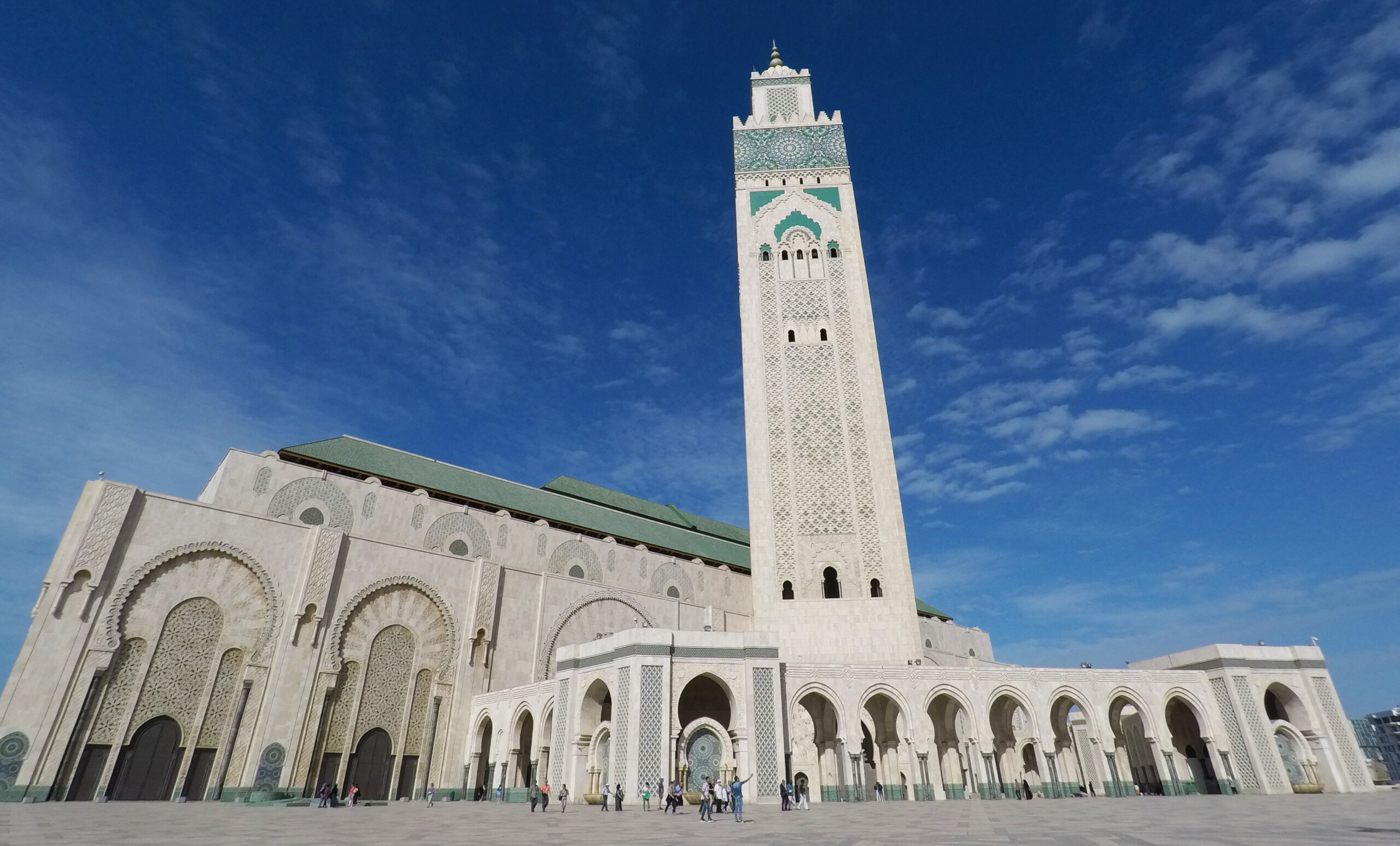The Great Hassan II Mosque of Casablanca: majestic, spectacular, grand… It is a real wonder.
Since its inauguration in 1993, its 200-meter-high minaret or minaret made it the tallest temple in the world, until the inauguration in 2019 of the Djamaa El Djazair Mosque, in Algiers, Algeria, whose minaret is 265 meters high.
It is located on an artificial island on the Atlantic Ocean in reference to a verse from the Koran that indicates that «the throne of Allah is in the water».
Its construction began in 1989 and concluded in 1993. It required 53 thousand square meters of carved wood, as well as more than 10 square meters of mosaic and between 50 and 80 million hours of work.
It has the latest technologies such as earthquake resistance, roof that opens automatically, heated floor and electric doors.
The architectural project was commissioned by King Hassan II of Morocco, designed by the French studio Michel Pinseau.
The Moroccan king’s idea was to provide Casablanca, the country’s economic capital, with an emblematic building that would once again place it as the spearhead in architectural matters and that would represent the Arab-Muslim tradition of the country, as well as its entry into modernity. Through this monumental work, it was also sought for the city to have its own landmark building, in the same way as the Moroccan imperial cities: Fez and its Karaouyine, Rabat and its Hassan Tower, and Marrakech and its Koutoubia mosque.
One of the reasons why the Hassan II Mosque is worth visiting is precisely that it is possible to do so. The vast majority of Moroccan mosques are not open to visitors and their access is restricted to believers to perform daily prayers. This is the case, at least, with the religious temples of the great cities of the country: the Koutoubia in Marrakech, the Al Karaouine in Fez, the Hassan in Rabat, the Great Mosque of Tangier … and a long etcetera. However, non-believing visitors can enter this site, within strict hours and after paying the entrance fee.


Leave A Comment